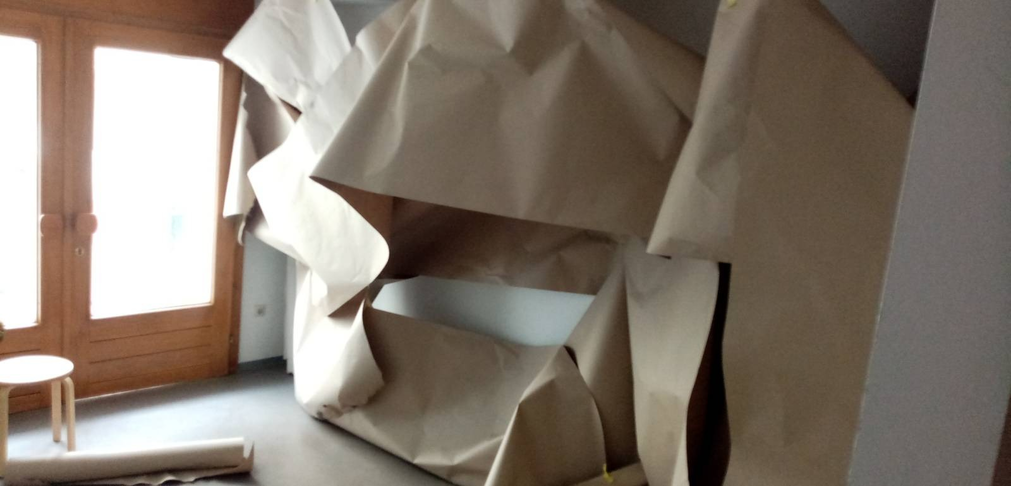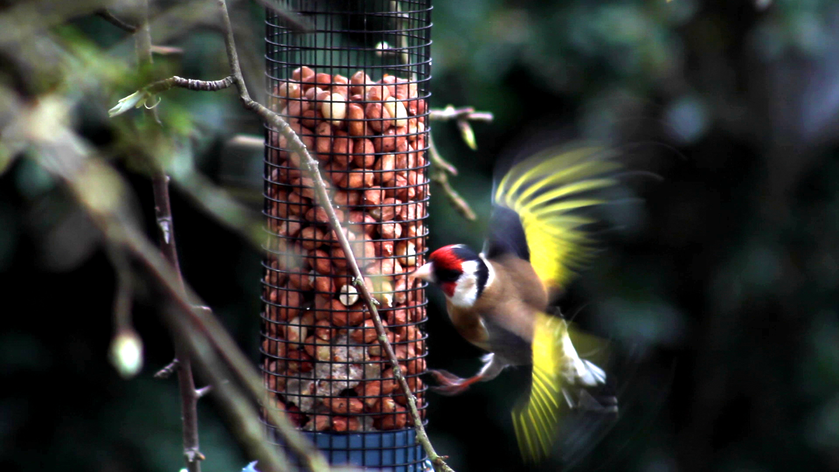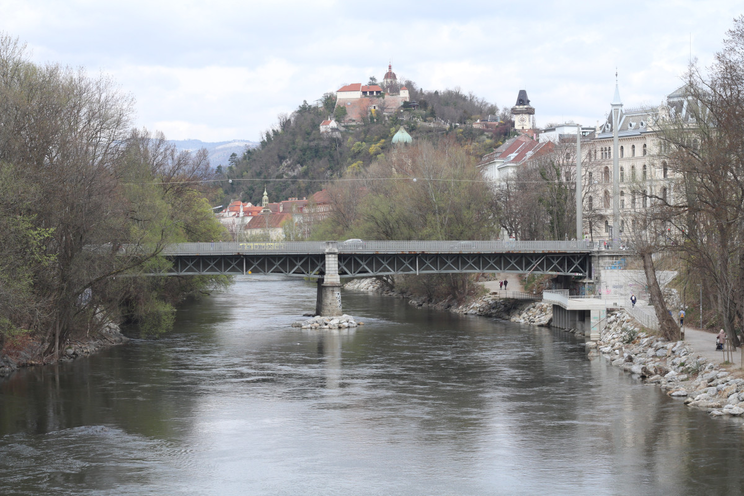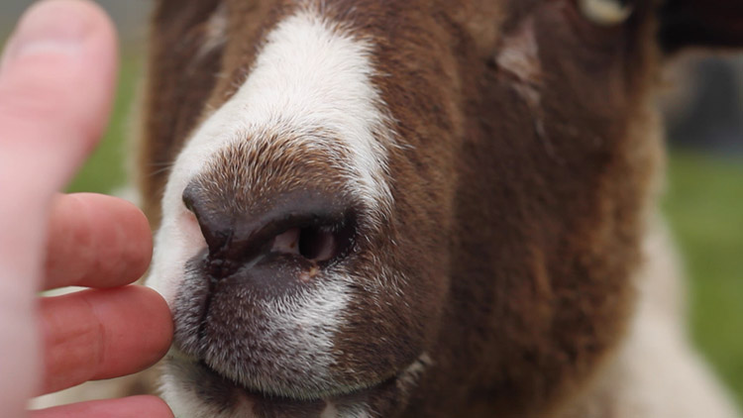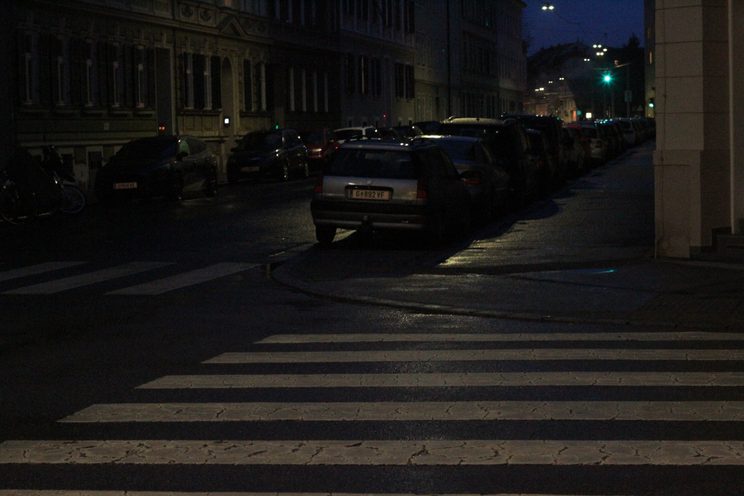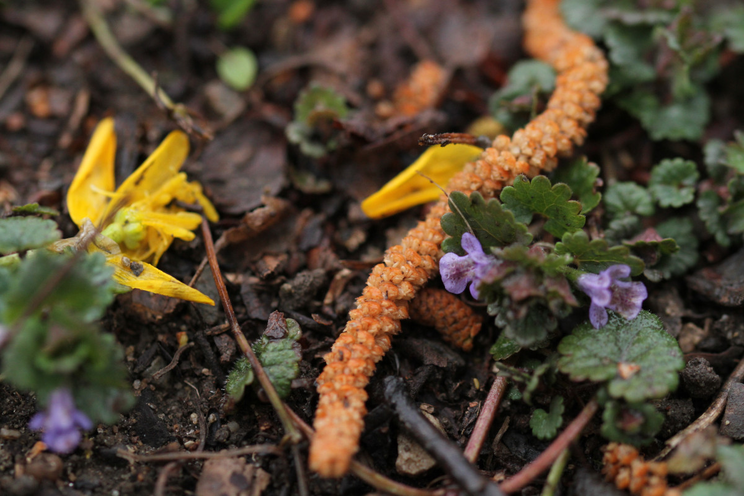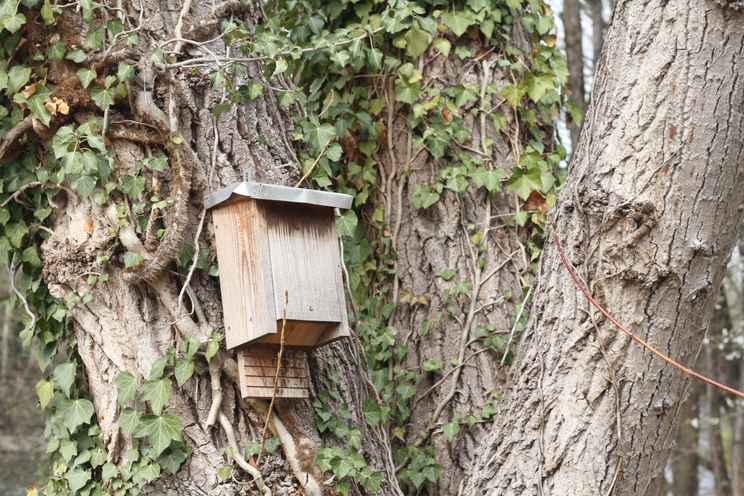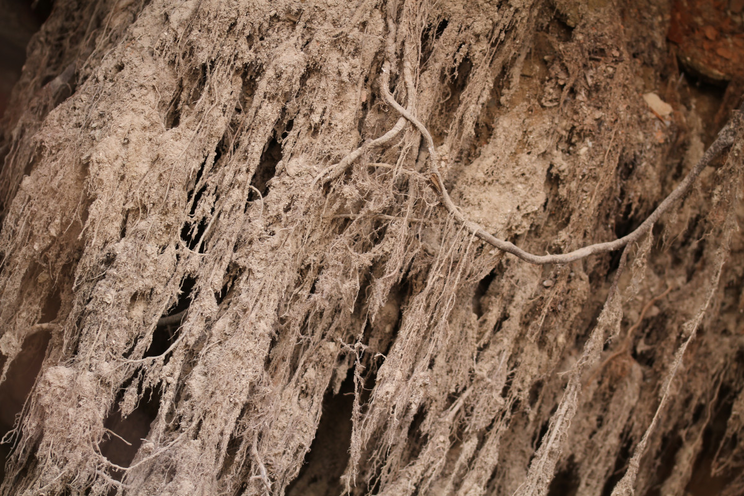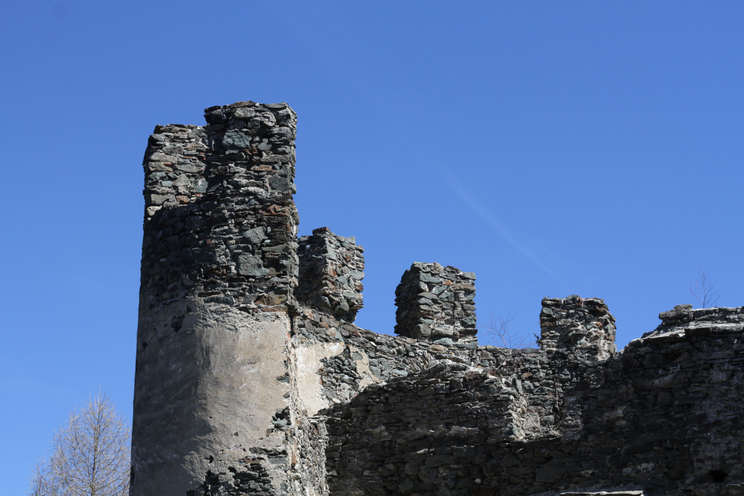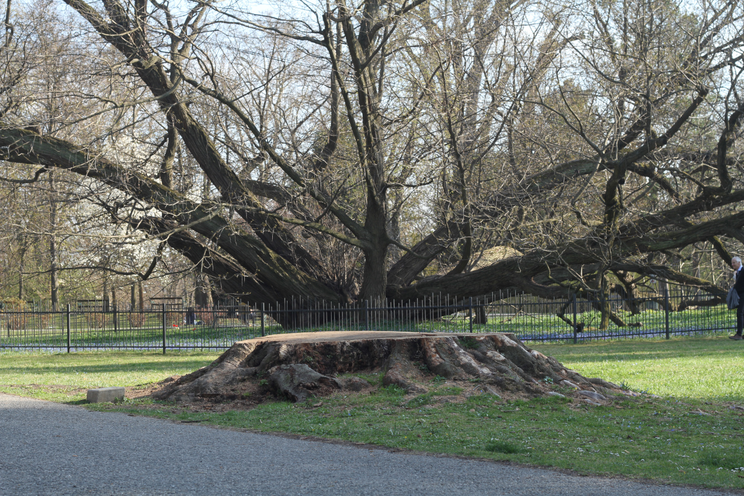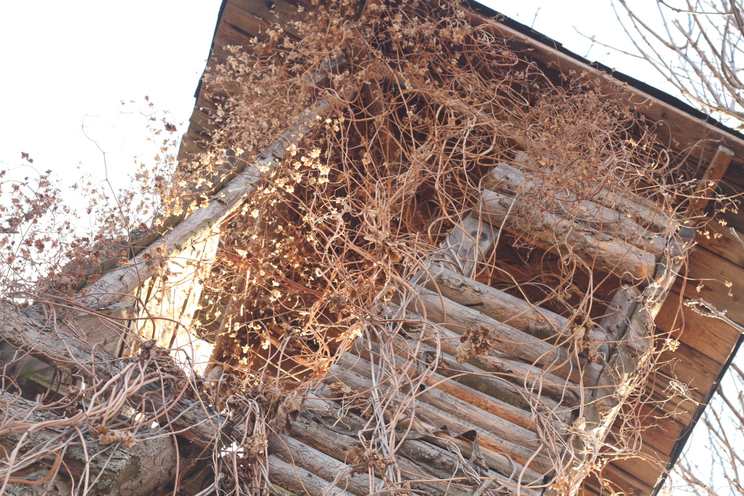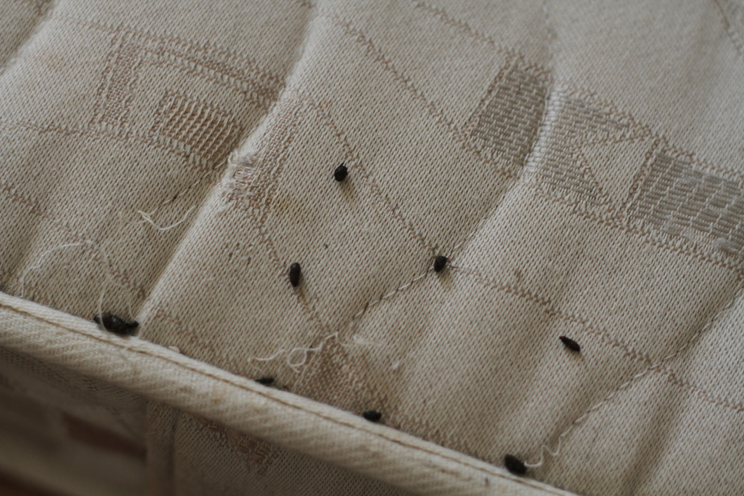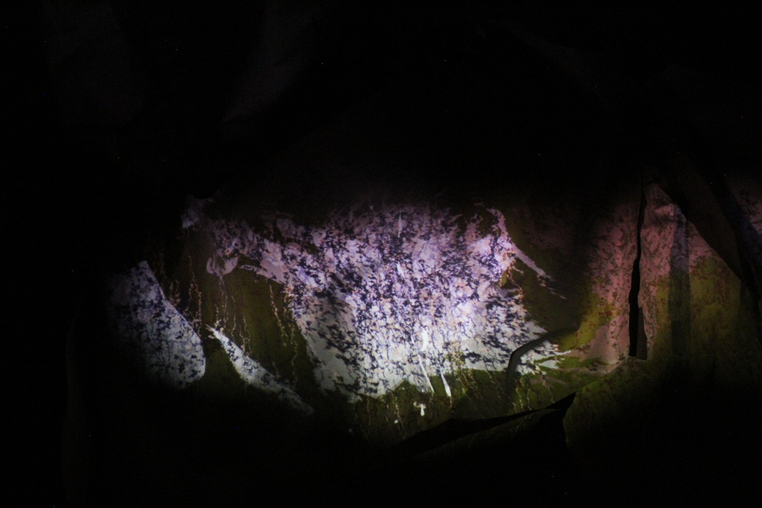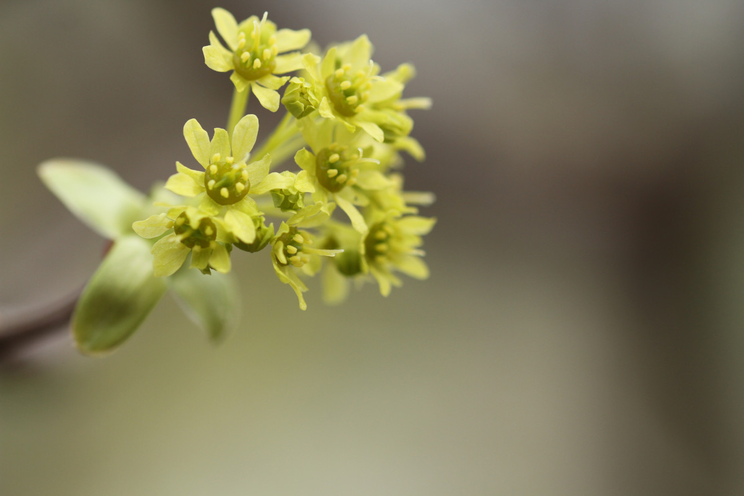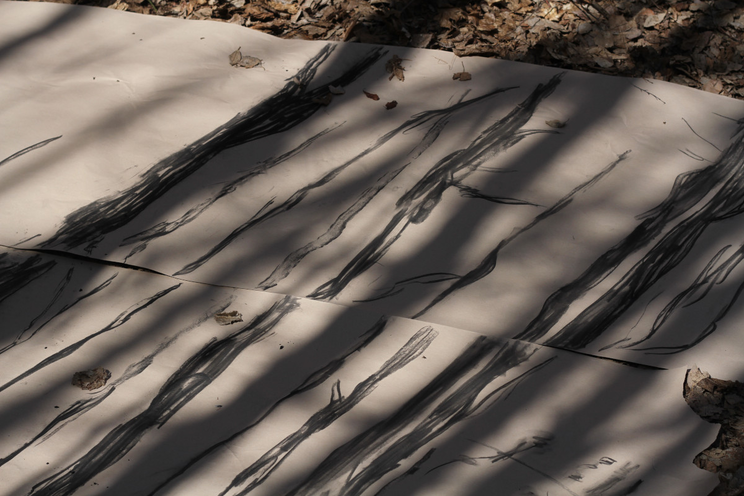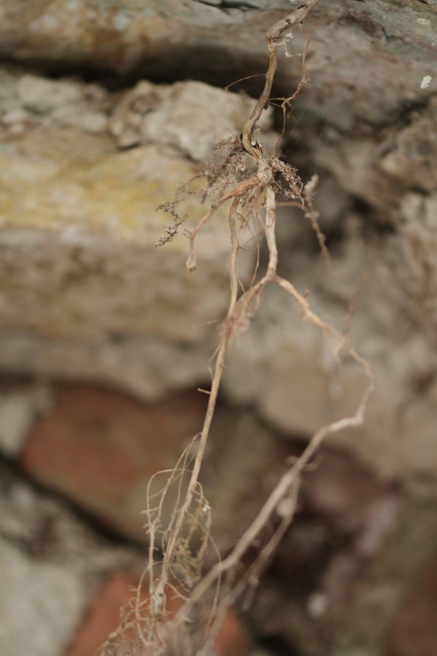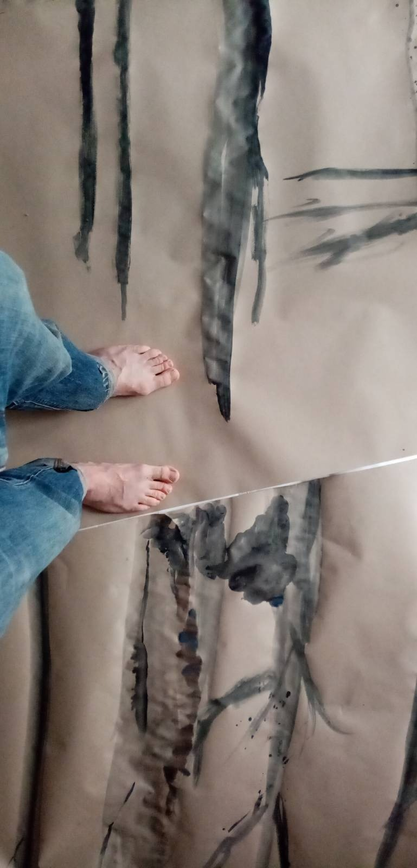Shane Finan assembles things into art, including interactive contemporary technologies, found objects and traditional artistic media. His work is based in rural environments and examines the role of contemporary technology on nonhuman and human behaviours.
He always collaborates, most recently working with ecologists, sheep, fungi, epidemiologists, artists, historians and bacteria. As part of his practice he organises, coordinates and manages short-term art projects, often inviting other artists as partners and collaborators.
Trained in fine art (IT Sligo, 2008) with a focus on painting, he completed an MSc in interactive digital media (Trinity College Dublin, 2013). His media include computer programs, installation, painting, events, dialogues, text and community projects.
His work is about place, environment and technology, influenced by contemporary research from science, art, philosophy and sociology. His work uses transience and ownership of place as subject matter, encouraging audiences to interact with artworks while accepting them as events, moments, or experiments with ownership and collective sharing. His ethos holds that nothing is owned, it only has value, and value is transient.
He has won awards from the Arts Council of Ireland (2019, 2020, 2021), Culture Ireland (2018, 2021), Creative Europe Ireland (2020) and Wicklow Arts Office (2021, 2022). His work has recently exhibited in Ireland, the UK, Norway, Greece, and Slovakia. He has completed residencies with FIELD (University of Lincoln/Wellcome Trust, UK 2020-21), ENTWINED
(VARC/Northumberland Wildlife Trust, UK 2020-21) and Leitrim Sculpture Centre (2021).
halves
03/04/22
Today as planned, I walked the river. I went a little south from where I am staying at mur.at, and walked north until Murgasse. I walked slowly, greeting the birds and the flower buds. It's a nice time to be looking at city nature – the plants are all coming to life and giving off explosive colour. I crossed east, then west, then east again, zigzagging over the bridges. Each time I crossed it felt like something shifted, like walking through a mirror. I am still obsessively thinking about screens (can you tell?)
Afterward I walked to Reagenz and spent a couple of hours in the studio, mostly pacing and thinking. I drank a nice cup of coffee. Then I paced a little faster.
Today I really started dwelling on what form this collaboration might/should take. Are we going to work togehter on one artwork? Or separately on a selection? How much time is everyone able to give? Will I need to do the lion's share of making, as the on-site AiR? If so, am I responsible for making sure that everyone's ideas are clearly embedded in whateer is made?
Hanns Holger, David and Naya all have similar practices to my own. I would guess that Jackie's is also close, so it feels like for media we will likely have a lot of common ground. Would it then be useful to consider using the same media, creating a limitation? This makes me think of the oulipo, the writer's group who always had rules. By far my favourite of these misfits has always been Georges Perec, who wrote an entire book in French (A Void) without using the letter "e". The translator Gilbert Adair then completed the feat by bringing the work to English with the same limitation.
That's a deviation, but maybe worth considering. If we have a set of rules for our collaborative work, then maybe something else happens. Without some rules, some structure, there is always a danger that this will be all cerebral with no visual. That might be fine, but I would like a little more structure, even if just as a playful disruption. Jackie spoke about games, and how they bring both order and chaos. I like this possibility.
Today was also very hard. I was lonely for most of the day and walked aimlessly, torturing myself with as much imposter syndrome as I could muster and wondering why I am here, why I am trying to eke out a life making art. I miss my family and my confidence is low. Is it saying anything to anyone, even to me? Why do we do this?
I was lifted a little by watching a mother and daughter dance in the fast food place where I got a pizza for dinner. Then the man who served me started to speak to me in his broken German and English, and my broken Germany and English. He is Kurdish, from Kurdistan, but (as he says) "really" from Turkey. We spoke for a little while about travel and distance and wealth. And then I took my pizza and he took a phone call, but I feel a little better.
Tomorrow, I hope, we in Graz will all meet in person. Then we can discuss collaboration and other things and maybe some of this will ease.
how we come together
05/04/22
Collaboration is a tricky idea at the best of times. I spent most of today considering collaborations that I have been involved with that have worked out well, and those that have not. I wondered for a little while if there was a secret recipe for success, but quickly dismissed this. Below is an outline of projects that I have been involved in, and how they have worked. I hope to draw from this now, so am seeking some ideas about how collaboration really comes together.
Artist-led projects (2007-2013)
In 2007, I formed an artistic collaborative group, Push Remote, for young artists living in rural Ireland. At the time, I was upset at how fragmented people were in rural areas, and how difficult it was in particular for young artists to find opportunities. I put together a core group and we led pop-up events, exhibitions, interventions, music shows, and eventually in 2009 we opened an exhibition and studio space in Sligo town (my homeplace). I also collaborated with three other colleagues to open a second such space in the same town around the same time. And then we become complacent. Life caught up, the spaces cost too much money to maintain, I was working a full-time job and trying to run these spaces and my own art practice all simultaneously, and eventually it fell apart. But it was a good learning process: the idea had been to come together with a shared goal (helping one another to start off our careers) and for that, it was a success at that time at least. The studio/gallery finally closed in 2011 and I folded the group in 2016.
In 2011, I was invited onto a collaboration with two music and media technologists and two artists (of which I was one). This project, Where We're At, took place in an abandoned building that was owned by a bank, which had become abandoned after the 2008 financial crash. Inside were many technological devices, buttons, switches, screens, and other toys. And we were asked to use this space to create something. We made two installations, bouncing off one another, the technologists taking on the technical work and the artists taking on the more conceptual, but in the end we cross-pollinated a lot. I learned some basic computer programming, which was the first step in a long journey that led to me bcoming a technology-based artist today. This wa wildly successful for all four of us, and one of the four has become a lofelong friend.
By this stage, I had led many artist-led events and projects under no real banner. While on residency in Iceland (2011) and USA (2012) I put together artist-led exhibitions in different spaces with other resident artists. In 2013, I was invited to be an artist at Granby Park, a fascinating large-scale collaborative event that took place over one month in Dublin. This "happening" featured music, community events, workshops, exhibitions, a library, and a park. It was adored by people locally, but one of the things that I found most fascinating about it was how it was intentionally time-limited. People begged the organisers to keep it open, as it was so popular, but they refused. This, they insisted, was an event and had to be. It's ephemerality was what made it important – people would remember and would seek to build their own spaces in future. This is true. I wrote an article for the Irish Journal for Arts Management and Cultural Policy about this in 2013-14, which can be read here.
Growing new ideas (2014-2019)
In 2014, I was hired to be project manager on a 12-partner EU project led by Trinity College Dublin. This gave me a completely new perspective on collaboration. The project had partners in ethics, industry, research, linguistics and emergency management. We were based in four countries, with different languages and cultures. We were a team of over 60 people. When I saw this progress, I became aware of how different cogs exist in a machine with a predetermined goal. We were working toward developing technologies for emergency management to help people during flooding; the aims of the project (which I had to oversee as part of my role) were to develop an ethical and legal framework to do this, to create technologies for data analysis, and to spin off a company or a future research project so that there is a legacy. All of these were successful, but some of the parts worked better than others. It took time and a lot of effort to keep team members working together, to keep focussed on these goals. We had to be flexible enough to change direction if research told us something better than what we had planned was available.
I worked at the university until 2020. In the interim, I continued organising artist-led projects, but began to expand what these looked like. I realised some things about my practice: I believe that ephemeral projects are a useful way to ensure they do not outlive their own impact. I realised that it is sometimes good to have people in teams who specialise, but that even then that a project should be flexible enough to change direction if the right idea comes up.
Nonhuman and human, together (2019-2022)
Throughout this period, I found something missing from the equation. I understood space and people well enough to know how things work when projects come together, but there were gaps. My own research in this time led me down a rabbit-hole about technology, networks, togetherness, and how our ideas have developed. Leaning into critical technology theory and to posthuman philosophy, I found an area that I thought could open up collaboration to make more sense to me. But it needed me to remove some prejudices.
The first was the anthropocentric assumptions that I had grown up with. The second was the connected assumption that technology is part of human exceptionalism. The third was the assumption that our bodies are the end of our interface with the world around us. My cage was pretty rattled at this stage.
In 2019, I created my first human-nonhuman collaboration, working with living birds, numerous sensor technologies, human researchers in zoology and human audiences to create an installation The Repeated Refrains of Nature. This artwork about the depopulation of birds started a new series that is still going. It connected collaboration to the more-than-human, and gave me ammunition for a lot of future work.
I attended a course online in 2020, called We Will Dance With Mountains, and led by prominent posthumanist philosopher and writer Bayo Akomolafe. This course was great for repositioning the mind into posthumanist thinking, but it was an unexpected connection that was the real benefit from this course. I met three others and we formed Kinship Group 26 – a group of four misfits who now meet every Wednesday online to discuss projects, posthumanism, futures, art, life, ableism, and many other things. We have formed an ongoing, experimental, strange and wonderful collaboration without map, destiny or rudders. They are very much present with me now when I make work, and they are here in Austria with me too (Loes, Craig and Stefanie).
Since then I have worked in collaboration with fungi, trees, foresters, ecologists, researchers and artists on ENTWINED, a multi-artist research collaboration led by VIsual Arts in Rural Communities (UK, 2019-22) where I was partnered with a tree-planting project, Kielderhead Wildwood. Later, I was invited to be one of three artists in residence with FIELD, a 6-university collaboration between epidemiologists, historians, economists and social scientists in the UK investigating endemic livestock disease (2020-21); I expanded the collaborative work to bring in farmers, sheep, gates and bacteria in a study of the more-than-human connections that develop through lameness in animals. I then put together Púca in the Machine, a collaboration between three artists, seven librarians, and many fish, animals, birds and trees that form part of the ecosystem around Poulaphuca Reservoir, Ireland (2021-22). I led this as an experimental research project, allowing the artists to respond through collaborative and individual work, and guiding the research through my own familiarity with the subject matter. The resultant exhibition has proven to be one of the best projects that I have been involved in.
These three: ENTWINED, FIELD and Púca in the Machine were very different collaborations but all brought something valuable. ENTWINED gave the possibility of working with volunteers, research experts, and nonhuman organisms as a way of understanding these complex connections. It was experimental, research-based, but also showed how work can develop quickly when connections are made. It was interrupted by the pandemic, but I kept conversations going with research partners by video call throughout 2020, setting myself up for an intensive month on-site in 2021. I suspect something similar might happen at Hotelpupik for Swap Space.
FIELD, although positive in many ways, was also a struggle. The three artists found a perfect working balance, meeting regularly and developing ideas in tandem. The ideas were unique to the artists, but were also shared – by realising our ideas together, we became a single entity working on different artworks. This is a system that I suspect will also happen in Swap Space. The major issue with FIELD was its fragmentation: It was difficult to see an end point because it wasn't clear what would come out (research papers? an exhibition? a country fair?) so we worked blindly on outcomes. In the end, I created interactive installations but they have not yet exhibited as the project team don't have experience with exhibitions. This fragmentation was a learning process for all of us, and we acknowledged this.
Finally, Púca in the Machine showed how likeminded artists can work together in a short space on research that is not necessarily written but is place-responsive. We walked the shores of the reservoir, and considered the space as an entity using phenomenological, empirical and artistic research methods. The resultant artworks were diverse but shared themes, ideas and aesthetic. This happened naturally, as a response to the site and to our coneversations and readings. The resultant works are now touring in Ireland.
Swap Space (2022-)
So where does all this end up? I don't know. There have been benefits to all of these projects, and down sides. I can see that collaboration flourishes when people are allowed space to create, but that there is also value in having shared processes., goals or ideas. So how does that come into Swap Space? I don't know.
I am considering rules, determining how we all work together through setting a limitation, like the Oulipo. This has worked in the past, but when I suggested it to the group there was a lukewarm respose. So maybe something else, like an outcome, would be stronger. Could we have an exhibition, or stage an event? It's possible, and it's something I can definitely bring to Ireland if not to Graz (I also work with a curator from Turin who is very interested, so perhaps there is another possibility). Right now, I fear the fragmentation that I saw on FIELD. The collaborators here seem burned out after two years of COVID, and seem a little directionless. This is a part of collaboration too, so maybe this is what we need to address. Hanns Holger, leading this work to date, has cleverly suggested an intensive week at Hotelpupik in Scheifling, which is a great idea to force us into a space of focus. I am sure it will lead to positive results, but also worry that a week might be too little. And the site-specificity is fantastic, but one of the artists (Jackie) will still be remote – how does this affect what we do?
I am still puzzling over these questions at the end of the day, but will figure parts of them out. If the collaboration is only through contamination, then that is fine. I will contaminate too, and I will bring my friends, projects, my partner, my daughter, and all of those others that are a part of me. We will together create something in response to this project. And that will be a collaborative act itself.
crow, ant, human, lizard, bluebell
06/04/22
Eureka!
Today I avoided the studio. I went to walk the castle grounds and to be a visitor to Graz. The sun was intensely beaming all day, so I took a chance on just walking.
I climbed the "Russian Steps", built by Russian prisoners-of-war in World War I (interesting historical contradiction with today). Out of breath, halfway up, I stopped to look around. I met some lizards, some ants, and I noticed how quiet this place was. Despite many trees and bushes, the birds seemed absent.
I climbed up to the top, where the ruins of the castle are visible, and looked off into the distance at the Alps to the west. I had been reading about how the climate remains milder in Graz than in many Alpine places because of the shelter provided by this geological wall to the west. Having grown up in an area that is constantly pounded by the Atlantic's waves and gales, I appreciate this point more than many.
On the descent, I walked the windy paths on the north side of the hill, through a mini forest in the city. It was quiet, with few people out walking. I turned a corner, and there stood a woman, small, round and grey-blonde, staring into the undergrowth. I stopped and watched her. She was conversing with something out of sight, so I moved slowly and then saw it – a big grey crow eating a nut that she had given it. It was almost within arms reach of her. I approached slowly, watching.
When I got too close for the crow's comfort, it flew off. The woman regarded me with a broad smile, then moved on. Later, down in the city, I saw her again. She was carrying an offcut of a cherry blossom with pink flowers on it, and was still smiling.
This was the moment I needed to open this place up. Something then shifted. I walked back through the park and saw things differently. I saw the bluebells growing in an area that was cordoned off, safe from human and nonhuman footsteps. I watched the ants scurrying in the stump of an old and very large tree, which I sat on for some time. I watched a group of red-faced alcoholics dancing to music near a fountain while a lean drug dealer passed something to a young man nearby. I watched dogs playing, and people setting up a strange ball-and-trampoline game that I am not interested in trying to understand. I ran into another Irish artist who Naya had introduced me to, Tanzin, and met her friend Jamie and her partner Omar. I listened to the sparrows signalling, and heard a croaking call that I did not recognise coming from one of the park's trees. I met Hanns Holger for a pint. I had a very reaffirming conversation with Kinship Group 26 about immunity, barriers, ideas, discrimination and authenticity.
These things are coalescing.
Something is moving.
I want to make a window.
modes of travel
01/04/22
The feeling is familiar, yet distant. The padded seat grips me firmly by my hips, buttocks, thighs and lower back and I am in the air. My body detects that movement. Perhaps this is the feeling my daughter has when I scoop her from the floor. I am out of control, but it is safe.
Yet this familiarity is punctuated by a strangeness: Each time I breathe out my nose and chin are engulfed in my warm air. A barrier is placed around my lower face, designed to separate the movement of particles from one place to another, so they are imprisoned here in this small space. This mask is a constant reminder of strangeness in familiarity.
Another strangeness overwhelms me. The seat between me and another passenger is empty. This absense is a reminder that I have left the familiarity of the company of my partner and my daughter for the first time since the latter's birth five months ago. They were both supposed to accompany me on this journey but were not able, as my baby's passport has not arrived on time. Without them, I feel untethered, incomplete. I have always felt this when travelling away from my partner Amy, but it is more pronounced this time as there is another connection that is strained.
After a short sleep, I wake and see daylight on the demarcated fields far below. A light dusting of grey snow or frost makes the ground seem pale and crystalline, and makes the sky more translucent. Rare, soft clouds hover below us. In the distance, a cluster of chimneys, preposterously tall in this flat landscape, pumps thicker white clouds into the sky.
On the plane I bought a cup of coffee, something I almost never do. But it has been a long morning – beginning at midnight in Ireland I have travelled thirteen hours to Graz, via three cars, one bus, one train and one airplane. I have only stepped foot in two countries but have flown over at least five more. And then I did what seems now inevitable – while trying to write these notes on my laptop, I spilled the airplane coffee across the keyboard. I immediately turned the device off and tried to dry it as well as possible. I had joked before packing that I would love to travel like I used to, before I was burdened with all of these pieces of technology. Perhaps my subconscious took this seriously.
I hand-wrote the rest of the day's notes as a result. By the end, my hand was aching, not being used to so much writing. My body overall is reacting: My ears are raw from wearing a mask hooked around them for the entire journey. My left ankle is strained and swollen. My stomach is unused to this type of eating on the fly. This is my body during migration.
This body is cyborg too, guided by maps on apps. Propelled by machines in the sky and over land. The train through the Alps is like reading a tourist brochure for Austria, presenting one broad vista of forested mountains after another. I realise that I have been looking through glass all day, a barrier for the wind that allows me to see but not sense the world. From the airplane I saw the criss-crossed lines of flight paths like a tartan pattern over the clouds. From the cars I watched streetlights and people on bicycles. Everything is obscured by a barrier between my human body and that world outside, and only my eyes are engaged.
Hanns Holger was waiting with a camera pointed at me, standing there just outside the train as I arrived in Graz. He and Naya take me to see my place, then to see Reagenz, then for a meal, the only real food that I have eaten all day, and we discuss the project and get to know one another a little. They have both also travelled so much. I try to consider this arrival, and how it is affecting me, but the journey is overwhelming and I am exhausted. We have a couple of beers and than I flee, on foot, and manage to walk through this brand new city back to the small apartment at the residency programme mur.at where I can finally rest. Twitchily overtired, I fall to sleep and wake late the next day.
amseln und greten
02/04/22
I take a long time to rise after the long journey. At one stage, in half-dreamlike state, I hear a knocking at broken intervals outside the window. It comes in short runs, then stops. I can't tell if it is pipework settling or if it is an animal, but my guess is a woodpecker. What it is pecking is not clear, as there are no trees on the street.
In fact, trees are not really a feature of any of the thin streets here in Graz. The city feels a little like a northern Italian one, with close spaces and thin footpaths. A new city is always a challenge, so today is for navigation only. I spend time walking without maps, letting my feet make decisions about which direction to take. I am taken by all the hard edges – buildings here stop right at the footpath. There are no gardens in front, no walkways or awnings on shops. Where the horizntal of the road and footpath ends, the vertical of a building begins, street after street.
And then there are the parks. In these the spaces become open, dotted with trees but traversible. The weather is lousy for an open walk, but I have been cooped up for a day so I want to stroll and think. On my way toward Reagenz, I stop at Stadtpark to record some audio and discover that I have left my sound recorder at the apartment. Another technology letdown. My laptop, by the way, is still working – I borrowed a screwdriver from Hanns Holger to open it up and clean it and it has survived, albeit battle-scarred. The return key and several others on the right-hand side of the machine no longer work.
In the park I stay and watch the blackbirds, male and female sex, as they dance around and pull up worms and insects from the grass. The rain is cold and falling in heavy droplets, but it isn't unbearable. I watch and photograph a little. There are not many people around, although the sounds of the city are always dominant even over the bird calls. In the trees the bluetits and greattits move among the catkins, picking out things of interest with their usual quick motions.
I stop to look at the bluebells and the trefoils, and other small flowers that I don't know the names of. They are staking their claims, becoming part of a late-blooming Spring. My arrival has not had an affect, I believe, even if I did bring the Irish weather with me.
These little moments of organisms that are not human-made (although they are somewhat human-controlled) are again a stark contrast from the street to the park. Even getting into the park, I had to cross a road, standing patiently at a pedestrian crossing (a patience I would never observe at home but I know it can be very ill-advised in soem countries to do so).
At Reagenz I meet Hanns Holger, and we have a coffee. Naya's library is a thing of beauty, and I can't wait to dive in a little more. I came on time to see the automated spraying of water on a lichen that Hanns Holger has been growing, and he shows me some other works that are ongoing. He also tells me that the supermarkets are now closed (after 6pm on a Saturday) and that they will not be open again until Monday. So I have to live off the few bits that I have bought until then.
I walk back in the gloaming and stop to take some photographs. I eat a quick falafel on a square and watch the people come and go. My German is so rusty, I have no confidence and I barely manage to speak to the staff in the kebab shop. But I get there. I hope this will improve in the coming weeks – it is one more barrier.
And on barriers, Graz is separated by the Mur river, which divides it north-south down the middle. Tomorrow I am going to walk some of this river and consider that division along the water's edge. I do not yet know what this place is telling me to make as an artist, but the journey and the barriers have certainly taken a hold during this early stage.
rules
04/04/22
This was a day of conversations and contemplations. We had our first collaboration conversation since the project began, with me on-site. Before that, I had a long chat with Hanns Holger and got to really know the space and the ideas behind the project.
During the call we took a few directions, considering movement, migration, and the idea of borders in more depth. We didn't come to any concensus on what way we want the collaboration to operate, which makes things a little difficult. Hanns Holger has suggested that we just try setting some rules and seeing how that works out.
A few ideas are sticking with me. Windows as dividers, the possibility of screens and projections, the scope of materials are all very much in my mind. I'm also feeling the influence of my other collaborative project (Kinship Group 26) as the conversation keeps moving to the body and mobility, something we have discussed in that group at length.
I am considering beginning mourning earlier than usual, casting aside some good ideas because I can't do everything. I have gotten some large paper and some charcoal to get the process of maing on-site started.
Today while walking to the studio I noticed in the park that some dandelions have evaded the park keepers and have grown in the cracks on the footpaths. Some borders are already ignored.
what's with the fish?
07/04/22
This fish statue. What is all this? I see it in different parts of Graz and I don't have an answer. Nobody here seems to know.
I started drawing today, and making an interpretive note of the things that I've seen and considered since getting here.
Hanns Holger shows me a stretch sensor. This is really interesting and something I am sure I will use, even if not for this residency.
I also meet the little boy who loves HH's sensor artwork. He talks to Hanns Holger for a long time about Raspberry Pis, Python, Scratch, sensors and other techy things. I wish I had recorded that – you couldn't bottle the passion!
I also don't know what this pink building is near Reagenz – it is unmarked but looks like a school and has a crucifix on the wall. Hanns Holger and I go to check it out but are none the wiser (note: later learned that this is a Frauenhausen for orphaned girls).
I also notice this insect that hovers around the area where the wall meets the street on some of the older buildings. There are very many of them and I can't identify them. I want to try and meet them a little closer soon.
a simultaneous arrival
09/04/22
Today we came by car to Hotelpupik, and our week away began in earnest. It was a short journey into the mountains, and we arrived around 12:30. The car was packed to bursting point in the morning.
Consuela joins us in the car so we are a complete contingent. On the way, we discuss drawing, responsiveness in art, how much wine we should drink, and talk about different perspectives on art and life. And then we arrive.
Our host, Johanna, offers us coffee then shows us around Hotelpupik. This space is extraordinary – there are many workspaces that are all old barns, workhouses, a mill, and other farm spaces. This building was the farm of the Duke of Schattenberg, next to his castle (which is still next door but is only a ruin, having burned down in 1915). The Duke is still the owner of this space, Johanna explains; he is an old aristocrat in his 80s and has an appreciation for art. One of the buildings is newer than the others, and this site (with its evident mouse infestation) is rented separately as a world space for artists coming here.
There is an endless amount of stuff here, leftover bits that have been made or used by artists since the residency began in the 1980s. Even the kitchen is full of half-finished bottles of spirits, half-eaten packets of pasta, and other bits that Johanna pleads with us to use up when we are here.
Technically, the castle is off limits, but I go to explore its space and come across deer tracks, human footprints (and old campfires), and other signs of life. Trees grow inside the old castle's spaces, with some having seeded in the concrete between the stones of the walls. The castle is the wildest place here, with all this life; next door and on most sides are pine plantations for Christmas trees, and some farmland. This is human-controlled nature all around nature-controlled human, but there are evidences all around of the occupation by nature of all of these buildings. Bird droppings in the studios, mouse droppings in the second house, deer hoofprints on the paths, ants in the kitchen, trees growing through the old walls. There is a contamination here, of human on nonhuman and vice versa.
scanning for life
10/04/22
What changed when we arrived here? Of course, we are looking for changes in ourselves, but what unseen changes happened all around us? Did the deer or birds eye us at a distance, or did they even care? Have our smells changed this space? Did our footsteps disturb the beetles or the radicles?
Before we came, I was going to buy a portable scanner, but Hanns Holger said he already has one from a previous project. It is great that there is so much here to work with – Hotelpupik itself is full to the brim with equipment and objects that can become artworks. But I want to scan the surface, and the scanner will be my tool.
In the morning, we eat breakfast (Hanns Holger makes pancakes!) and then have our first one-hour discussion about what we will do, and how we found the arrival. One point of conversation really interests me, and it is about perspectives. Alisa says that it is great to be here in "nature"; for me there is almost no nature here. The birdsong is almost nonexistant; the animals are all hidden. So we speak at length about this, about trace and contamination, the invisible and invasiveness, and set ourselves up for the day.
Naya, Hanns Holger, Consuela, Alisa and I set out to scan some objects in the old castle. We use an acrylic sheet to protect the scanner, and get some interesting effects documenting the earth, walls, trees, and other surfaces. Then later I drag some cables and a plastic box into one of the studio spaces and start epxerimenting with the transparency and the possibility of drawing with these objects.
The cables and the box are a bit of a failure, but they get me thinking about things moving through other things. I like this position, so am going to start to work up a few sketches based on the invasion and revision of "owned" Land by humans.
Later in the day, I take a walk and discover a hunting tower, completely enmeshed in ivy-like creepers that have taken it over. It must be some years since it was last used. I go halfway up the ladder but decide to turn around as I'm on my own (I've done enough stupid things in my time...).
Our evening meeting brings my thinking back to drawing, and I'm beginning to hatch ideas about drawing and animation that might just work for this project. Animation are things in flux, so it seems inevitable, and animating with an interactive element can make the invisible visible (as all good art should!).
bad dreams
11/04/22
In the evening of the 10th, over a little too much wine, I make a promise before going to bed that I will dream nice dreams of flying, in colour, in multiple languages. I then had trouble getting to sleep and when I finally did, I only had dreams of my daughter, turning away from me and leaving me repeatedly in different scenarios. I woke repeatedly through the night, almost feeling feverish from the intensity.
I miss her terribly. My partner Amy sent some photographs yesterday, which didn't help. Now I feel adrift. So today I find myself taking time alone, trying to avoid the group as I'm not in the mood for the conversations and the cameraderie. I take about an hour to stand near the second house at Hotelpupik, where the print facilities and animation facilities are based, and I look out for mice-friends. I don't see any, but I meet a tree sparrow, a blackbird, and many ants (the latter I film for a little while, watching how they are wearing away the foundations of the house).
Things are missing, but at last something is also coming together. We had a productive call with Jackie, David and Daniele, giving us a chance to externalise some of our thoughts while Jackie also offered some really interesting reponses to the materials that she has seen to date. In particular, she discussed her role as non-present as documentation and experience are undertaken on site, and how this is leaving her with a chance to feedback through her perspectives and interpretations of the ideas presented.
I call Amy and Mella later. Usually Mella doesn't like the uncanny valley of the video screen, but this time she accepts it when I play a little with her. This makes it all a little easier, although the personal is definitely punishing the professional now.
Maybe that stress and upset is also helping me to focus on a possible outcome from this, artistically, aside from this documentation. Drawn animations have been in my head for a little while, and I think an interactive element to these (the human hand, participating either to remove or to reinforce the nonhuman) might be a good way to present this space. It also links to my past work, so there is a nice continuity for me.
I expect I'll only complete one or two of these animated pieces by Friday, but I will also work on other elements and keep taking photographs and other documentation so that I can make more when I return to Graz.
roots on rocks
12/04/22
Creeping through the gaps of the castle, in those liminal spaces between stone and brick, are roots and shoots. The stonework is crumbling slowly, a relic to a decaying era that seems to stubbornly keep its space here.
In the foundations of the hotelpupik house, the ants are carrying away the stones one at a time, oblivious to the impending disaster that they gradually move toward. Every tiny piece of cement that is removed is a structural instability in the enormous house above. One day their homes will be crushed by the weight of the house that they will bring down on top of themselves.
In the day, I draw the roots and trees that grow between the castle's walls. In the night, I return to do long exposure photographs. The night-time soujourn comes with the unease of all night-time wandering in unfamiliar spaces – I am skittish and small noises startle me. I do hear (but never see) deer in the pine tree plantations. I do hear (but never see) blackbirds that I wake, who call out a warning to their kin. I do hear (but never see) mice, or some other critter that creeps among the dried leaves on the castle floor.
Today, Franziska left our group, and David did not arrive due to a family illness. Yet they are both present (as is Jackie, and as are many other unnamed humans and nonhumans).
Elvan (Johanna's child) is also sick with a stomach virus, another unseen but prominent critter that has come to join our household.
Before Franziska left she ran a brief workshop of slow-walking, where we moved at a preposterously slow pace in a space of our choosing. This was wonderful, a thoughtful and interesting engagement with body. Consuelo also ran a workshop on drawing what we hear, using two hands simultaneously. I was struck by how many of the noises were of human origin (a chainsaw, a car, a drone, a washing machine, the sound of the others drawing).
other castles
14/04/22
After another intense and fraught morning session with the group, joined by Daniele, I decide that I won't try to work further on an installation here at Hotelpupik but will instead document what is in this place for me, and then untangle this when at the studio in Graz.
Daniele joined us yesterday evening, and today he wants to see the area. He has an interest in castle ruins, and I still haven't seen the second (older) castle, Steinschloss, which is around one hour's walk from here, uphill. I suggest to Daniele that we can go, and he agrees; on the way out the door we meet Alisa and she joins us. On a warm, sunny day we make our way uphill to an old castle ruin.
This place is different from the castle at Hotelpupik. It is a 12th Century castle with the ruins of battlements and towers, and although the central area was probably a residence of a lord or monarch, it was not a place of grandeur and pomp like the duke's castle ruins. This place was a fort, and was built into the rock. From the top, we can see a long distance across the hills. It is also a tourist site, so is maintained and is not as overgrown.
We return in the afternoon and I take some time to draw again. Then I go looking for firewood as we decided to have a fire on the last night. Johanna suggests making me doubly useful, if I can cut and move the remainder of a large dead branch that has cracked off an apple tree near the house. I find a ladder, scale the trunk, and start to saw and all the dust blows straight into my face. I forgot to thank the tree. After I do so, the dust stops blowing. I shouldn't assume that I am doing it a favour.
The fire is a treat, and it's nice to stand outside in the night time. The moon is too bright to see stars, but the air is fresh and refreshing.
paper and wire
21/04/22
In the morning we visit David's workspace and experience his audio artwork. It's terrific, a 6-channel microphone and speaker setup that responds to the room. A living technical series of objects, click-clackins around us for an hour or so, mimicking collaboration or continuation of crowds.
Then I spend the day in the studio, working with wire and paper, feeling very technically underwhelmed. My media are becoming so non-digital, which is very strange to me. I have no desire to turn on my computer at all, except to listen to music or keep one eye on the snooker in the background while I work (yes, seriously).
The constructed space that I am building is coming together as of today. It should be finished Friday or Saturday latest. I am also going to move in to the studio apartment at Reagenz Ost for the last few days while I am here, so that I can work late with this. I just need to tie up some loose ends here first.
In the evening, we have our collective meeting and Franziska and Daniele add their maps to our collection. We then do a short exercise with wire, and I am brought back to Donna Haraway's "string figures", something I hadn't thought about in a while. Suddenly I realise that I am building string figures since we have been here, and that we all are. And that book, Staying With The Trouble, is the same one that introduced me to Vinciane Despret's wonderful work. Weird string connections all around.
I work late in the studio, and will do the same for the coming days, as I want to show something that I'm proud of next Thursday when I finish here.
praktisch
26/04/22
Today was a good day. I finished the code for the projection/webcam part of the artwork that I'm making here. So now I only need a little testing time.
In the interim, I was invited by Naya and Hanns Holger to speak to arti-teachers in training at the pedagogical institute where they lecture. It was a good class. I decided to go as weird as possible and talk about my time spent with sheep in 2020-21. It was interesting to see the student responses. They seemed to enjoy the story, the strangeness of it. But two of the students mentioned how they would like more "practical" education on how to teach.
I don't really understand this question. What is not practical in understanding the nonhuman, or in spending time outdoors? I can't see how you could run a class otherwise: giving lessons in how to say "good boy", or "good girl" to students. For me, this is not an education.
My mother was an art teacher, retired last year. She taught in a prison, in the same role through her whole adult career. She believes strongly in the idea of art education as an introduction to education for those who see it as restrictive or distant. She always used art research as a method of teaching, and this was always practical. I don't think she is completely sold on my process (kneeling in fields with sheep is something she grew up with, having lived on a farm in her youth) but she understands the value of art practice as something that challenges, and sees how process can allow art to be different from other educational subjects.
So how do you impart this to art teachers who want to be practical? In fairness, I had the feeling that many in the class understood this value. Naya gave a presentation about the Quipu in Inca art before I spoke, and although some of them seemed to fight the importance of this in their plans for teaching, they did embrace the joy of knotting-as-artform in the practical session that Naya led.
The days are disappearing quickly here. I finally meet Rainey from esc, and her partner Yogi from mur.at; it's nice to put faces to the names of people that I've been told so much about. And Naya has an opening in a popup space with some great work, including by Elena, who I meet and whose work has a delicacy and lucidity that I really enjoy. In fact, the whole exhibition is of a very high standard, including Naya's poetry-generating machine.
I work late again, tinkering and tweaking my code.
setup
27/04/22
This is a studio day. This evening the installation will be fully set up and running. I am keeping my cards close to my chest because I'd like to see how people respond.
My quote that I unburied to define this artwork, from one of my favourite pieces of writing:
'Infinity is the ongoing material reconfigurations of nothingness; and finity is not its flattened and foreshortened projections on a cave wall, but an infinite richnes'
-Karen Barad, what is the measure of nothingness? infinity, virtuality, and justice, 2013
There won't be a diary entry tomorrow, I guess. It's a busy day of setup. Hope things all work out easily enough...
finalé
06/05/22
In the end I built something. It was a space for one person at a time. It's hard to separate the personal from the "objective" academic, and as I said to Hanns Holger on my last day in Graz, I think that my loneliness played a role in the work that I built in the end, along with all of the other research.
A visitor goes into the room. All around is an enclosed space, like a cocoon. Roots or branches are painted on. A projection picks up the movement of a person who enters and creates trace lines where they move. Eventually, those lines too become roots.
The next morning after showing this to an open audience, Franziska challenged this type of space in relation to Hotelpupik. Her view was of an open space, very built, with hard edges. I countered that I was looking where the roots were growing, where the ants were digging, and so my space was dark and enclosed. David followed with a point about how perception is related to our bodies, and how we would perceive differently if we had different bodies.
All interesting conversations to conclude a fascinating month. Where do we go from here? I am not sure.
It's hard to locate what has shifted in my own work, and is equally hard to see what I have left behind with Hanns Holger, Naya, Franziska, David, Jackie, Consuelo, Alisa and Daniele. Maybe not much, but there is a trace there, just as they have left a trace on me. But that's not really what we set out to prove, it is what we set out to record.
In my own response, I built a space to consider this. So did David, and Hanns Holger. Each of us created work that was not exactly collabrative, but that reflected collaboration and embraced the individuality (see: multiplicity) of the human body that created the work.
After the presentation of the work, I had one more day in Graz. We all had lunch together, and then Naya organised a tour of Graz's art scene. It was a great day: we saw at least FIVE ARTS! The posthumanist exhibition in Rotor was wonderful, and we met Tom the curator at Graz Kunstverein. We saw a retrospective at Kunsthaus, and some ducklings in a pond, and ate some ice-cream, although maybe not in that order. It was a treat – the exhibitions were very good. I met Andrea one more time at the group exhibition that Naya's work was in. In the evening, we took down the installation.
I don't like to say goodbye.
As an islander from the edge of Europe who dislikes flying, I decided that despite my longing to go home, I would take a few more days to visit the Venice Biennale when I could go easily by bus or train. But it is closed on Mondays. So as I finished on a Saturday I saw little point in travelling straight there, instead taking two days to visit Ljubljana, a city I've wanted to see for some time. When there, I met Luka, a sound artist who I know from the same online space that I met Hanns Holger in (Mastodon) and we spoke about art and music and grief and space and collaboration and fungi. He is a character I immediately liked.
I saw another great exhibition in Ljubljana, a massive installation that took the entire basement of a massive museum space, Curcarna. The show was by Rosa Barba and was sublime. I spent a long time there.
A great few days of art was followed by two days in Venice. Too much to write about that, really. But in gist, I am very glad (as usual) I went to the exhibition, and I feel charged by it.
I am writing now from my kitchen in Ireland, trying to unpack all these thoughts. I think this will take some time. I'll come back to it. For now, I'm just very happy to be home.
all together now
08/04/22
This morning is the first nearly-complete meeting of all on-site participants. Unfortunately Franziska can't come. But we get some time to speak together, on camera, and really consider what the project can be. Daniele also attends, and Alisa joins us as a member of the team.
I am not comfortable being recorded at the best of times. I do not like to be on film, and change my behaviour when people point a camera at me. I also dislike audio recordings, sometimes even more than video because they lack the context of gesture. So the "informal" morning session leaves me very uncomfortable and on-edge before we begin. When we enter the room, two cameras and two microphones are pointed at five chairs in the least informal setting I have ever observed (Hanns Holger insists it is still "informal" even when Naya and I protest this, and I begin the session in foul humour because I feel so uncomfortable).
We discuss how to document this process at length, and work out some of the key logistics to what we want to achieve. Everything feels well prepared prior to going to Hotelpupik tomorrow.
I ask around but I still am none the wiser about the fish.
In the afternoon I am exhausted and I fall asleep for nearly two hours. I very rarely sleep in the daytime so this must be my body catching up after all the travel. I feel much better afterward.
A note on arty art:
I go to an opening at Graz Kunstverein. It's weird. I arrive at 5pm and there are about 20 people standing outside, all dressed almost entirely in either black or white, and all clearly know one another. I go inside to look at the exhibition, and am followed by an agitated member of the gallery staff who eventually explains to me that the opening is for member's only until 6pm, when it will open to the public. I was alone and found it very odd that they saw my presence as worth responding to; the whole event felt like a scene out of The Square. I started laughing and then just went to walk the city.
I returned at 6pm. The artworks were OK – film installation about the body and disruption to the earth's surface through drilling into irradiated stone. Some of the film is nice but it's not my type of work – too unwelcoming and uncritical, and it didn't seem to be probing anything that hasn't been deeply probed before. Steel girders sit on the floor and are used as a motif throughout (why?) and some really cool chains are run through walls, which I liked, but again couldn't really grasp the central meaning to any of this work.
The audience was still very high-brow even at the "non-members" launch, and I couldn't help but wonder why this type of thing exists – everyone was speaking English and hugging and acting in a way that makes no sense to me as this pandemic continues. It felt like people celebrating their class by throwing caution to the wind. Even in pretentious spaces in Ireland there is usually a more mixed audience for an opening, and I couldn't help but think..."this is Graz! Not New York!" An expectation of knowing hung around the space, and it made me wonder about art's role in cities in general. Nobody here seemed to care about the art, just the conversations. Is this just a social club for a specific class? Were they really threatened by my presence earlier, as clearly an outsider (I was wearing a colourful shirt!)? It was all a little strange for me.
It has been a long time since I have bothered with the "art scene" in this iteration. Alhtough I work with galleries and organisations, I generally avoid this type of space or work, so maybe it seems strange just because it has become foreign to me. Maybe two years of pandemic have layered on an extra sense of strange.
animating liminal spaces
13/04/22
An intense and very strong session this morning. All recorded so hopefully we can revisit that. The gist: we have discussed consent as a way of allowing one another to view each other's processes. We also discuss the problems with language (and how Hanns Holger and Naya have navigated this in the past by bringing in new terms, which of course also comes with its own problems) and the importance of being comfortable with how we present our work as a [NOT STUDIO VISIT].
I make a large drawing of the shadows of the trees in the castle, chasing the sunlight as it moves steadily. This drawing has given me some ideas about a spatial takeover for an installation, and I am also mulling over how to make a space difficult to climb into, so that the visitor's body reenacts something similar to (but considerably faster than) the tree roots squeezing through the concrete and stone.
go n-eirí an bóthar linn
15/04/22
The last day is scattered. Johanna gives us a task of mapping the week through drawings, which yields some interesting discussion. I find it most fascinating how the individual personalities of our group are prominent in the things that we draw.
We leave after lunch-time, and the road is pretty clear. Alisa and Daniele have already travelled by train. I fist-bump Elvan as we go, and he seems pleased with that.
I am going to take a break from this diary for a few days, to refresh and contemplate. I know today what I am going to build (roughly) but I need to map it out in the space. I want people to enter the liminal space and to watch the deconstruction of human places as it happens. This is a little tricky, as I want it to be both embodied and accesible (for my cyborg friends). So I have some tests to do.
Tomorrow I will collect a bike from Daniele, which will change my mobility significantly. It is owned by another person from Sligo, Ireland, by strange coincidence. We don't know one another, but Daniele knows us both so he is mediator, via Padua. It's strange how things come together sometimes.
production mode
18/04/22
I arrived back to Graz with a lot of thoughts swirling around, and with a lot of material to work from. I am convinced that I need to build a liminal place, one that is reactive to audience, and so I start experimenting with creating a cave-like structure in the studio using paper. It's half-working, and I am getting a clearer picture.
Hanns Holger and I share a coffee. I tell him that I've gotten the bicycle, which belongs coincidentally to a fellow Sligonian. Strange coincidences in this world. I tell him about my colleague in the Dresden Academy of Fine Arts and he knows her colleague. Another coincidence.
I need to create more line-drawn spaces to make this created place work as I want it. I have this image of an ant tunnel under a building, something created with linear traces.
We have our weekly meet-up and try to discuss what the pulses and patterns of Hotelpupik were like. It's not easy to define or speak about, but Jackie notes that our energy has palpably changed, which is interesting. I guess we have drawn something from one another.
collaboration through ideas
23/04/22
As I continue this build, I have begun to think about what points of collaborative ideas have seemed into what I am making. Of course, there is liminal space, something that we have all discussed. There is the materiality of wire, something that Hanns Holger has also used. There is contamination and cross-pollination that Naya has spoken about at length – the trace of a person left in the room which will be part of the interactive element of this work is bringing this idea in. There is the effect of arrival (Franziska), the verticality of space (Jackie), the attempt to reach consensus (David), the freedom and personality of drawing (Consuelo) – all of these ideas are somehow contained in this work. And of course there is the idea that we all leave a little of something behind and take something with us – what I have used before in my own work, thinking of Maria Puig de la Bellacasa's point that the person that touches is also being touched by the object.
All of these ideas are seeping together. I love that I am creating contamination and a place that adapts and changes based on presence, but I love even more that we are creating this all together, from our conversations and ideas. The things that I have read here, the discussions, the places that I have experienced are all part of a collective experiential that is even shared by Jackie, who has been driven on by our energy as she mentioned in our Monday meeting.
Today we go for a walk together to lovely Leechwald, and have a picnic for Consuelo's birthday. It is a good day, and I spend a large part of it later in the studio, working until after midnight.
Late in the evening, a father comes with his daughter (around 10 years old) to collect his bike which is chained to the front of Ost. I am working on the paper walls of the artwork, but the lights are low and I don't think they know I am inside. I overhear her as, "was ist dass?". Her father thinks,"hmmm, es ist...es ist...hmmm...ich weiss nicht". I decide to let them in on the secret. I open the door and have a short conversation, magically being understood auf Deutsch, "sie kann es sehen...ich bin ein kunstler. Es ist ein kunst-raume, ein gallerei." The father nods, "Ah! Ein kunst gallerei!" I continue, "Ich male ein...um...ein liminal-spaz!" The father seems sated, and they leave soon after. As they go, I overhear the daughter, "Was ist ein liminal-spaz?" (I look the word up later and grenzraum* seems a better word, but not to worry). The father doesn't answer. I'm pleased with myself to think that she may still wonder about that days later.
*Naya later tells me that "schweller" is more correct.
In Irish it is tairseachúil, which is tairseach (threshold) with a diminuitive (úil) so I guess it's like "a little threshold".
in drear
19/04/22
I need to use the resources that are available to me. The old blocks of code that are buried from past projects are now being unearthed, to speed things up. Likewise, the old methods that I began my career with – drawing, painting – are being utilised. It's interesting to reconsider method.
And simultaneously, I want to build an installation and create a space that is a little jarring and uncomfortable. To do this, I want to make roots, and dangle them down. I want them to grow out of these spaces in the ceiling and walls that are in the studio, just like the roots in the castle at Schattenberg.
Today is dreary and cold. I go to OBI, a giant warehouse shop of overpriced building materials, and this is even more dreary than the grey mist outside. I buy some wire and leave disappointed.
My confidence in my spoken German is very low. I worry too much about not being understood, so I shy away from having conversations with anyone in OBI. It's hard to live with this limitation; it's likely that the staff speak English but I don't want to use that language. I have had enough of English.
something ozymandian
20/04/22
We build things. They disappear. We build them again.
Earlier this year I became obsessed with Shelley's short poem Ozymandias. It's a remarkable work for something so immediate and short. When I became obsessed, I read a little into its history and was surprised to learn that it was written as a game, a challenge with a colleague Horace Smith. Both poets wrote a poem with the same title and concept – Ozymandias is the remains of a statue of a leader of a lost civilisation. The famous line:
And on the pedestal these words appear:
"My name is Ozymandias, king of kings;
Look on my works, ye Mighty, and despair!"
Smith's also has a very memorable moment that places a lost London in a distant future, and is arguably an even better poem:
Where London stood, holding the Wolf in chace,
He meets some fragment huge, and stops to guess
What powerful but unrecorded race
Once dwelt in that annihilated place.
There might be something to this game of competition between two poets, who egg one another on to create something better. Maybe we can draw something from that. Shelley's poem is long remembered as a masterpiece of the short form, Smith's is unfortunately forgotten (maybe becoming its own Ozymandian remnant). And I go back to the studio to create these places that are carved out by ant and root, that are fallen into ruin, with the name of Ozymandias of Schattenberg buried somewhere under the burned castle.
Tape does not hold large sheets of paper to the wall. I know this, and yet I keep trying. But I have more materials now, including paint and some new brushes, and this means I can develop the aesthetic in the space a little more. Takine the charcoal drawings I did at Schattenberg, I begin to create more giant scrolls of lined paper which will form the walls of this liminal space.
I try sticking everything to the walls and ceiling, and it holds for a while. But not forever.
Hanns Holger and I share a lunchtime coffee and beer, and have some interesting chats in the sunshine about life, democracy, art. I need wire cutters, and Hanns Holger sends me to the most magical shop I've ever been to. Floor to ceiling sensors, electronics, components, wires, and all at good prices. It's caled Neuhold Electronik and I want to live there forever. Now I'm disappointed I didn't plan an installation with more electronics, but there's not enough time now to pivot. Maybe if I ever return...
I received some good news today that I have won a grant and can work a little deeper on a project that is ongoing. That is for later though.
I am again struggling without Mella and resolve to call her and Amy in the morning.
authorship
22/04/22
Over the last couple of years, I have battled with the idea of "authorship" (etymology coming from the same place as "authority" and "authenticity", both of which ideas I also have problems with). Are we authors of our own works?
I claimed a couple of years ago that I would stop crediting my artworks to myself, instead crediting the project title. This would allow an acknowledgement of all those voices (human and nonhuman) that participated to be somehow recognised. As written above, on Monday's meeting we discussed this, and David mentioned how all the names can be included in documents from CERN.
Last year I collaborated on an academic paper with a historian and a microbiologist. We wondered how we should list authors: who takes the coveted "first author", or do we invent a fourth human name that comes first? I discussed this with a mathematician who said that all authors are listed on a mathematics paper without precedence – they are usually alphabetically listed. I contested that this still gives precedence (eg. some quote by "Aaron et. al 2022") but he insisted. We didn't agree in the end.
Marc Augé had an interesting point about this, when writing about Rousseau's unfinished final work: "Over the course of time, their successive readings will question and enrich it. Thus the work will no longer belong to the author; he will be dispossessed of it." (from Everyone Dies Young, p39).
What authority might I keep over the work that my body predominantly builds here in Graz?
Today I have spent more time reading and sketching. I am going back to go forward. I have tested code. I have felt distracted. I am going to the studio late (later than writing this) to finish off the last few large painted pieces that will be the structure of the work I make there.
Augé concludes the above thought thus: "To write is to die a little, but a little less alone."
slowing down
25/04/22
Done with experimentation now, I am just trying to finalise all the work for Thursday evening. Hanns Holger has gotten his work up and running, and it looks good in the window of Reagenz. I am slowing down these diary entries for a few days as I need a different head-space.
roots
24/04/22
I have finished building the "walls" of the contained liminal space. Now I have started to make "roots" from wires and paper. I am not sure about these – I commit a few hours today to this, but they are not really working for me aesthetically. I have to think about whether to exclude this aesthetic element, or to improve it.
25/03 Meeting
We spoke about movement of of things. Moving house (and failing to), losing books, moving life, moving people. Movement and earthquakes and lightning (catatumbo) and storms and fracking.
And then we spoke about the rights of critters and Brehon Law. And Katie Holten and Katie Paterson and Anna Lowenhaupt Tsing.
And then back to Despret and the perspective of animals and birds.
Movement is maybe really important.
Maybe something can move from Nairobi to Graz?
Migration: Does everything migrate? How much moves all together (Shane). With migrations we always think about the things that move (Jackie).
Jackie speaks about Kahn book about radio – Hanns Holger confirms it's up on this space on PDF.
Some things to write up:
- alltar/ceantar
- more-than-human relationships including weeds in the city
- collaboration as research (púca/kinship)
- transistors, electronics and the other-than-human connections
- Light in the space and castle explorations?
- Migratory birds, the forest in a castle, and arrivals?
- I made a point about everything is interpretation from an individual perspective, and also that sometimes distillation is needed
- I mention Vinciane Despret's new book
- Fransziska mentioned the idea of measurmements on arrival as a starting point. Document the arrival at Hotelpubik?
- Recording the meeting isn't a great idea - David and Hanns Holger
- Naya suggests padding as a way to record
- Naya also mentions space, square and measurement (echoes to Franziska)
- Naya specifically mentions things that are measured that are "out of place" (Hanns Holger rightly says that he wonders what this means)
- Jackie told two stories about birds (crows and an owl) – adding to the arrival point I think about the idea of migration and arrival, and this point
- Jackie: "Let it happen and let the documentation emerge. The path is not there, it only appears as you start walking." – this about pulling at threads.
- Naya: "Doccumentation can be what is already left behind, or what is not there anymore."
- Naya: Documentation can also be about traces. Shane: Hotelpubik is also full of trace.
- Hanns Holger: A trace can get cold.
28/03
We recap last meeting
Franziska brings up the philosopher Vilém Flusser. Naya nad Franziska talk about the ideas of the life of an object and the posthuman in his writing.
Talking Despret:
Jackie talks about territory via space launches, the equator, and how posession works (eg. space launches in Kenya are owned by Italy – postcolonial space?). She also mentions the equator and latitude and longitude as these invented lines that are created by historical mapping figures.
Shane talks about temporal territory as per Despret. Some animals recognise that a place is owned only as long as the scent is recent.
Franziska speaks a little about this, in reference to posession through arrival.
Naya brings up Flusser again as a site of interest for underwater place as it exists. Hanns Holger reacts to this with a note about a website that goes deep into the ocean.
Jackie references an anecdote about a slip of the hand forming a border of a country during the Berlin Conference.
Also on temporal ownership: Jackie speaks about mosques and places that are built and changed over generations (each generation adds or changes the space)
Franziska speaks to how corridors are built to different purposes (missed the reference to a specific building) and how buildings were linked to water, Solstice, Equinox
Shane speaks about Carrowkeel in Ireland (Solstice/Equinox link) and how the space was used over 3,000 years for different or possibly similar purposes. Also refernces the Japanese temple that is rebuilt every year (or decade?)
Jackie says there is a place in Kenya where people shared ritual for a long time also, but now they are no longer sharing this and are at constant war/fighting.
Naya: "Maybe places are residual" – maybe they take different identities or categories.
Shane: Time is a part of a place – the moon comes closer and further and the stars change...
Jackie and HH spoke about the change to the sky's colour – in the former due to Krakatoa's eruption historical; in the latter more recently in Europe due to sands from the Sahara.
HH speaks about technology and the idea of recording echolocation using mic and sound. We speak a little about other technologies (eg ultrasound)
Franziska speaks about a project that she did without tech where students together went in slow motion, walking through a city. As this went on, the sounds began to be revealed.
Naya responds to this thinking about the reflections of a city and how things are perceived. She repeats a point about blindness that complete blindness is rare.
HH: A lot of interaction has a performative angle. We read together, eat together, and respond to space.
Shane talks about birds piece and staying still. Jackie responds to this by talking about her growing relationship with the crow.
Early thoughts
Déanfaidh an dáimh seo go gearr aon chorp: these kindred spirits will shortly form themselves into one body
An invitation came out of the blue. Later Hanns Holger confirmed to me that he first saw my work on the distributed social media platform Mastodon. That is a first for me – both having my work first spotted entirely online without any in-person interaction, and having it taken up from Mastodon, a platform I am relatively new to (since 2020).
Stranger still that this project is about being present, physically sharing a space. I have not been physically present with any of the Swap Space Graz artists, but I am here, floating around in this text box on the Research Catalogue. My body, sitting in the rural hills of west Wicklow in Ireland, is linked to these words through thousands of transistors and thousands of skin cells.
Hanns Holger, David and I met on the open source video conferencing platform Jitsi on Friday, February 11th. We talked a little about things that might fit this project. I felt very much like an invasive species being introduced as an experiment into a carefully cultivated petri dish of artists. Perhaps each artist felt that way when initially inserted into this collective.
This outsider-perspective of course creates great opportunity for exploring what is meant by collaboration. What might my perspective, artwork, research, conversation or life bring to this project? What might it bring to me?
The post-Darwinian view of a world in constant competition suits so many people who want to believe that humans set out with a view to take, never to give. More recent ecological studies have confirmed what was known long before Darwin: That while competition is a factor in evolution, there is also a lot of collaboration. One Darwinist microbiologist that I worked with in 2020 referred to this type of symbiosis as "reciprocal parasitism" as he was unable to accept "collaboration" as a term to apply to different species. That lack of acceptence itself presents the difference between truth and perspective.
Perspective can be real or performance. We spoke about this on our phone call as I got to know Hanns Holger and David a little, and as I introduced my own past collaborative projects, including collaboration with fungi and trees on The Wood Wide Web, with sheep and bacteria on ]EXPOSURE[[ENCLOSURE], and more recently with more-than-human occupants of a flooded valley on Púca in the Machine and my ongoing experimental collaboration and communication with the 4-person international group Kinship Group 26.
On the call I mentioned the opening to The Undercommons by Moten and Harney, where the authors write about how colonial settlers were always presented as surrounded by hordes of "natives" in pictures and films about colonial landings. This perspective immediately presents the colonisers as those under threat, as if the threat came from the natives and not the heavily armed and aggressive colonisers.
Moten and Harney also present an excellent case for how collaboration can be enacted. Their writing blends together so neither voice is clear in their writing; they speak about this wonderfully in a recent interview. Two bodies come together to create something better than either could individually – this is arguably what is really meant by "human nature" (although not only humans collaborate).
So when two artists work together, do both become a little more like one another? Or do they blend into a new body. In his final, posthumous publication, The Third Policeman, Flann O'Brien wrote sarcastically about the policemen who rode bicycles so often that they became more bicycle than human. They were unable to stop moving without falling over unless leaning against a wall or a fence. He was teasing recent theoretical physics in the 1930s, referencing the transfer of atoms in bodies that touch, but there is something else here too, which Karen Barad later develops into a theory about intra-activity. Our bodies are shaped by our collaborators, our devices, our relationships with human and more-than-human.
When Hanns Holger first emailed me, a ladybird (bóín dé in the Irish/Gaeilge language) landed on the artwork that I was busy building. It is too early in the frosty hills where I live for ladybirds to be around. The last time I saw one was in November, when a tiny one landed on my newborn daughter's ear, when she was not even one week old. Then, too, it was too deep into winter for the hibernating beetle-like insect to be around. They are a welcome visitor to gardens, the small devourers of aphids, and are also a sign of good luck in many cultures (including old Irish). I took this as a good sign. Even though the notice was very short, I agreed to travel to Graz to be part of this project, which I am very excited about.
What happens there will not be through a screen.
